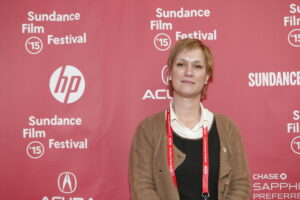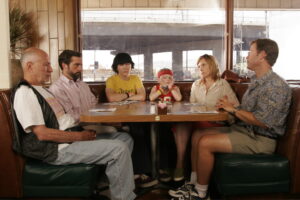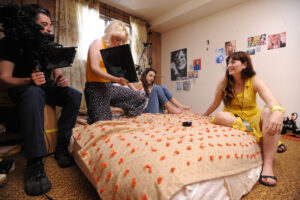By Jessica Herndon
In writer-director Marielle Heller’s feature debut, The Diary of a Teenage Girl, a scene opens with titular teen Minnie (Bel Powley) and her mom’s man, the much older Monroe (Alexander Skarsgård), laying side-by-side post-coital. As Monroe looks through Minnie’s sketchbook, he takes in the intricate cartoonish drawings that are a window into her inner thoughts. Minnie watches him lovingly while he eyes illustrations of butterflies, landscapes, monsters, and curvy women. As he turns the pages slowly, we see that just about every drawing includes a sketch of female or male genitalia. During the first few moments of the scene, all we hear is the sound of Monroe flipping the pages of the notebook before he says, “I don’t think you should show these to anyone.”
Instances like these introduced us to the way Heller focuses on quiet moments on screen. And 10 years after the release of The Diary of a Teenage Girl, about a 15-year-old girl in 1970s San Francisco who experiences a sexual awakening starting with her mother’s boyfriend, we are remembering how visionary Heller’s approach truly was.
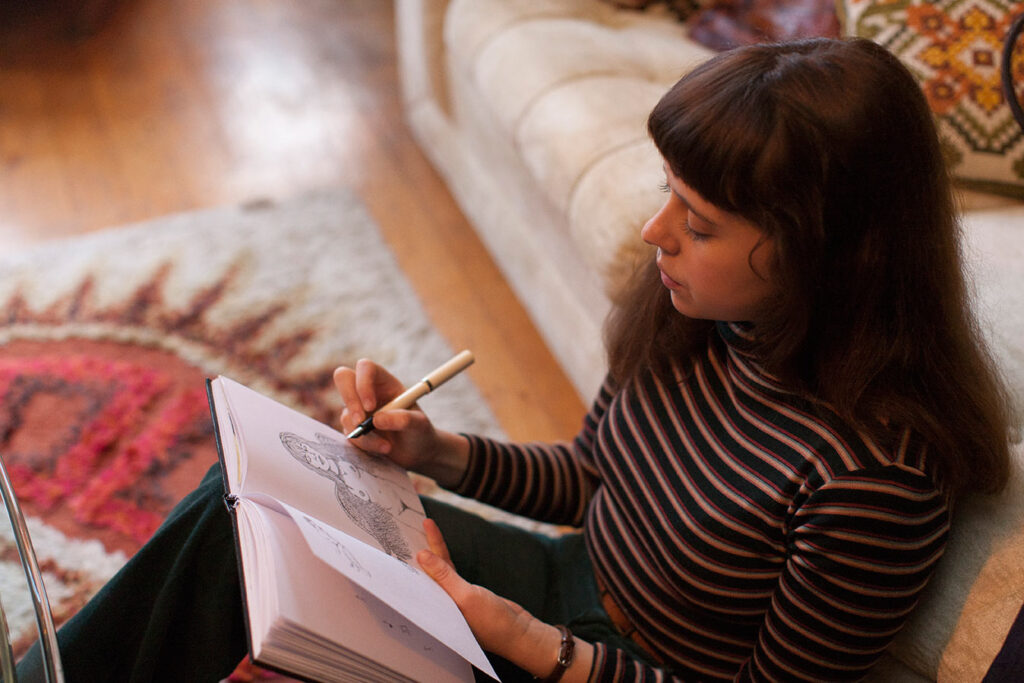
For Heller, finding power in stillness didn’t emerge in a vacuum, though. Three years before The Diary of a Teenage Girl would premiere at the Sundance Film Festival, she was absorbing lessons about the art of restraint at the 2012 Directors Lab while surrounded by an international cohort of filmmakers who would reshape her understanding of what cinema could be.
“In my lab were Chloé Zhao, who is Chinese, and Ioana Uricaru, who is Romanian,” Heller recalls. “The three of us would stay up late at night talking about what we wanted our films to be and what our aesthetic was. Our different backgrounds meant we were coming from such different places in terms of what we envisioned film to be. I learned from them every day by seeing their scenes and what they valued within their films, versus what I imagined I valued at that point in my own film.”
It was particularly Uricaru’s approach in her film Lemonade that opened Heller’s eyes to the cinematic possibilities of patience through, “recognizing quietness and long takes,” says Heller. “I think, being an American, I didn’t recognize the beauty of quietness as much until I saw all of these films that were being workshopped at the labs. I remember Ioana would do all of her scenes almost always entirely in one long take. Sometimes they were 20 minutes [long]. And I remember thinking, ‘I didn’t know you could do that.’ And I wouldn’t have known that had I not been watching her work.”
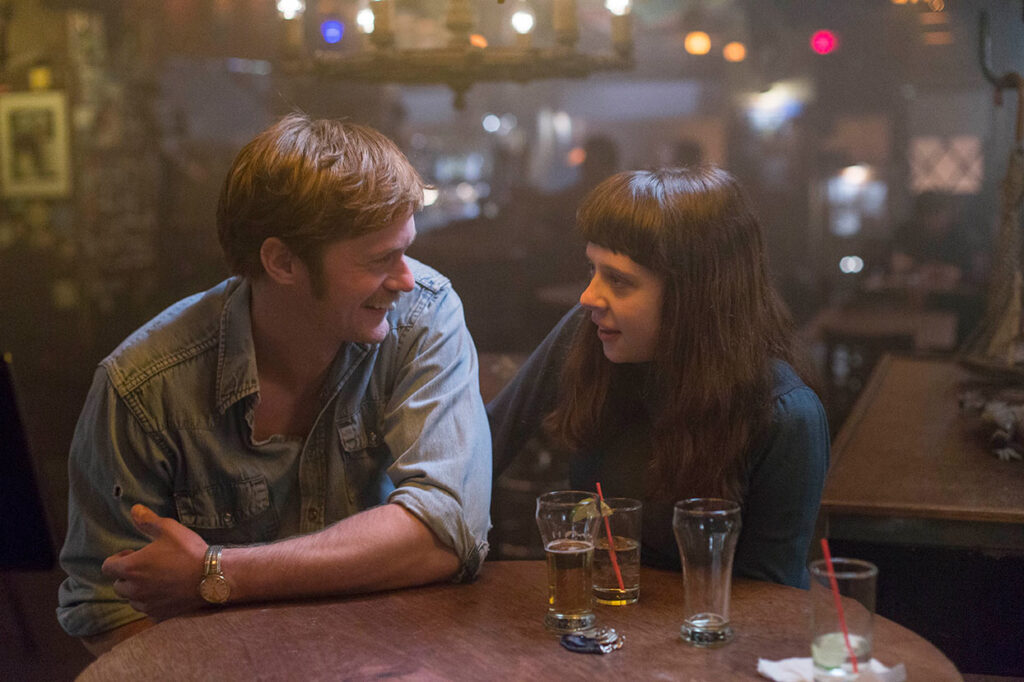
When The Diary of a Teenage Girl hit screens in 2015, what made it so striking was how Heller refused to sanitize the teenage experience or present it through a male gaze. It was raw and honest about female sexuality and desire in a way that felt revolutionary, especially for a film about a teenager. The film’s boldness found its power not in shock value, but in those moments of quiet observation, as well as its impeccable cast, which, along with Powley and Skarsgård, included Kristen Wiig.
The film’s producer, Anne Carey, knew the casting would be crucial. “Kristen Wiig brought a certain level of comedy,” says Carey. “Tone was so important.” Of finding Powley, who was 22 years old when the film was shot, she adds, “We knew we were going to have to cast somebody who was old enough to be in the movie.” Securing Skarsgård for the role of Monroe was also a win. “We found in Alexander Skarsgård an actor who was brave enough to play that part, because in some ways, that’s the hardest role in the movie.” In his incredibly nuanced portrayal of Monroe, he effectively walks the line between predatory and charming. Adds Carey, “The casting of Alexander Skarsgård was excellent.”
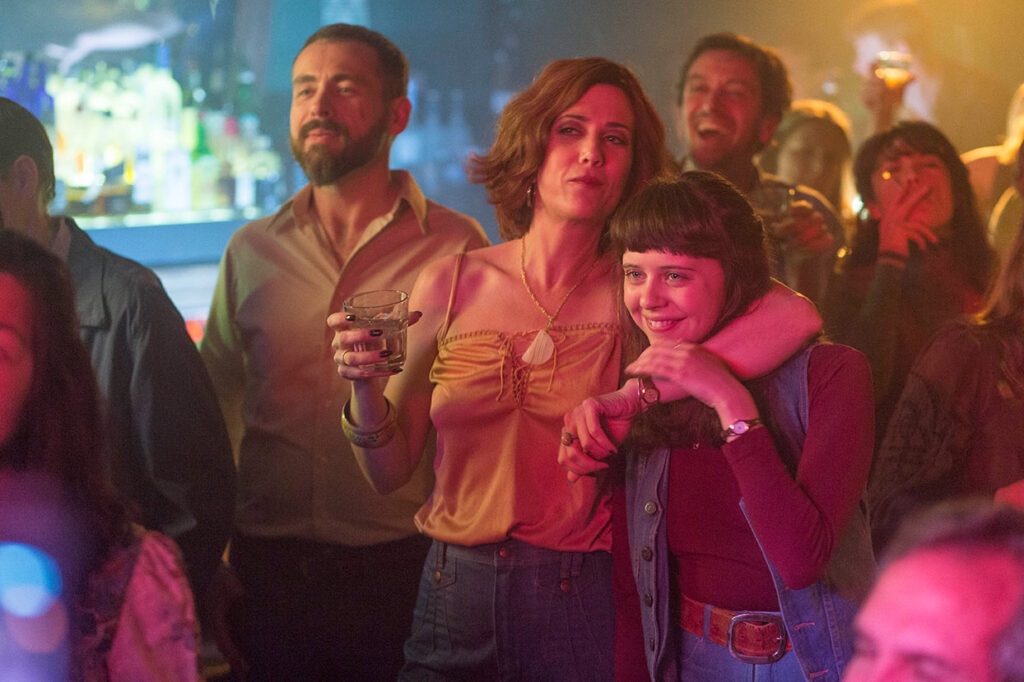
But perhaps the film’s most ingenious storytelling device was its seamless incorporation of animation — those cartoonish drawings that bring Minnie’s interior world to life. “The animation in some ways took us into some of the most challenging or potentially explicit parts of the storytelling,” Carey notes. “Not that the storytelling is explicit in any way, but the animation, the strong interior voice of that character as illustrated through the animation was — and that was part of the conception from the beginning based on a graphic novel, to provide sort of a safe space to talk about some stuff that might’ve been hard to do through traditional reality.”

Of Heller, Carey also paints a portrait of a director with a clear vision. “I was following the palette that she had put together,” she says. “Mari had a very strong point of view about who she wanted to be the costume designer. [Note: Carmen Grande got the job!] The casting of the people in front of the camera is one kind of casting, but the casting of the people on the other side of the camera is another kind of casting. We found the right team for that movie.”
Carey also points out that Heller’s deep connection to the source material and her time at the labs helped fuel her confidence when making the film. “Mari, she knew the story,” says Carey. “And again, I think the labs had given her a lot in terms of showing her what she needed to have in place to convey the story. But don’t forget, we had the graphic novel. She adapted it into a screenplay. She really knew it. And when a filmmaker knows what they’re doing, you can feel it.” Adds Heller, “You have to find ways to stay grounded in your own voice and what your intention is. And I learned how to stay in touch with my own voice at the Directors Lab.”
A decade later, The Diary of a Teenage Girl feels like a blueprint for authentic women-led stories. Those moments Heller embraced — the calm periods, the raw intimacy and honesty — remain inspiring touchstones for dynamic filmmakers looking to center complex women and be the architects of their own stories.






